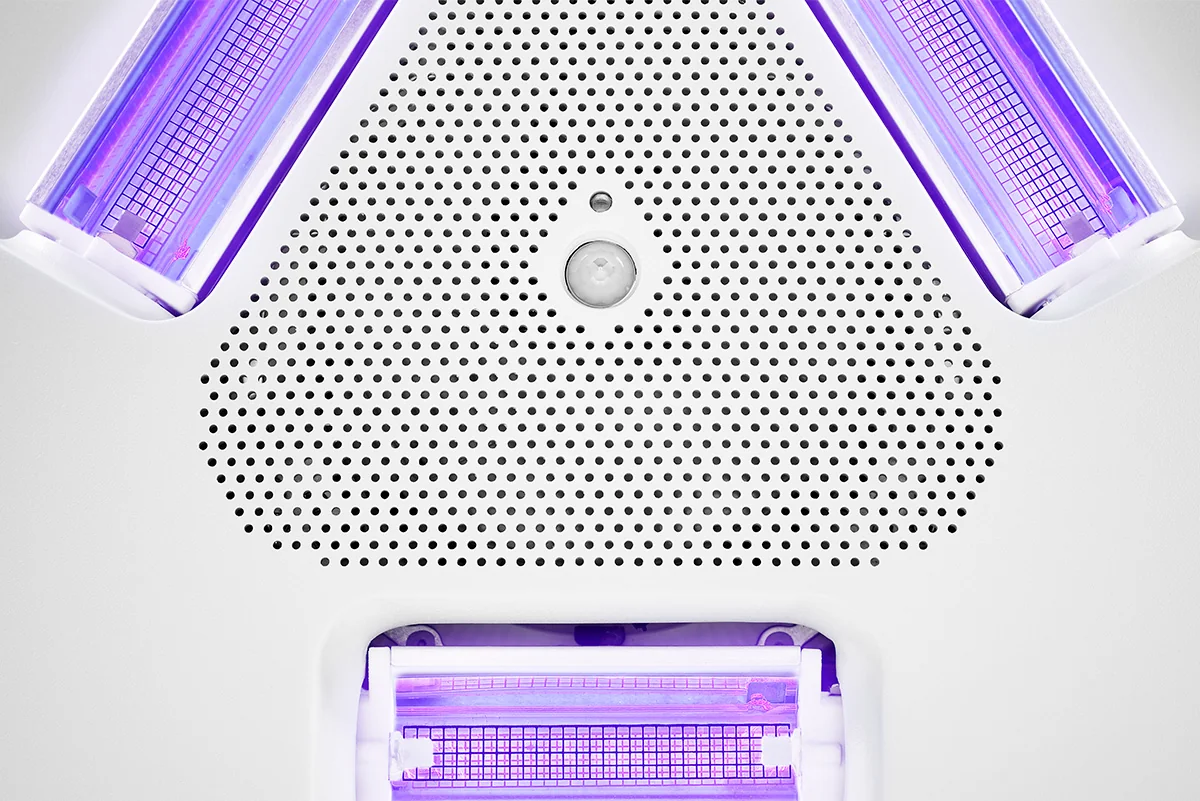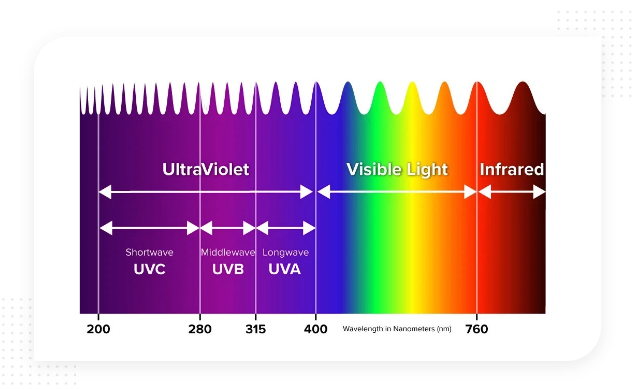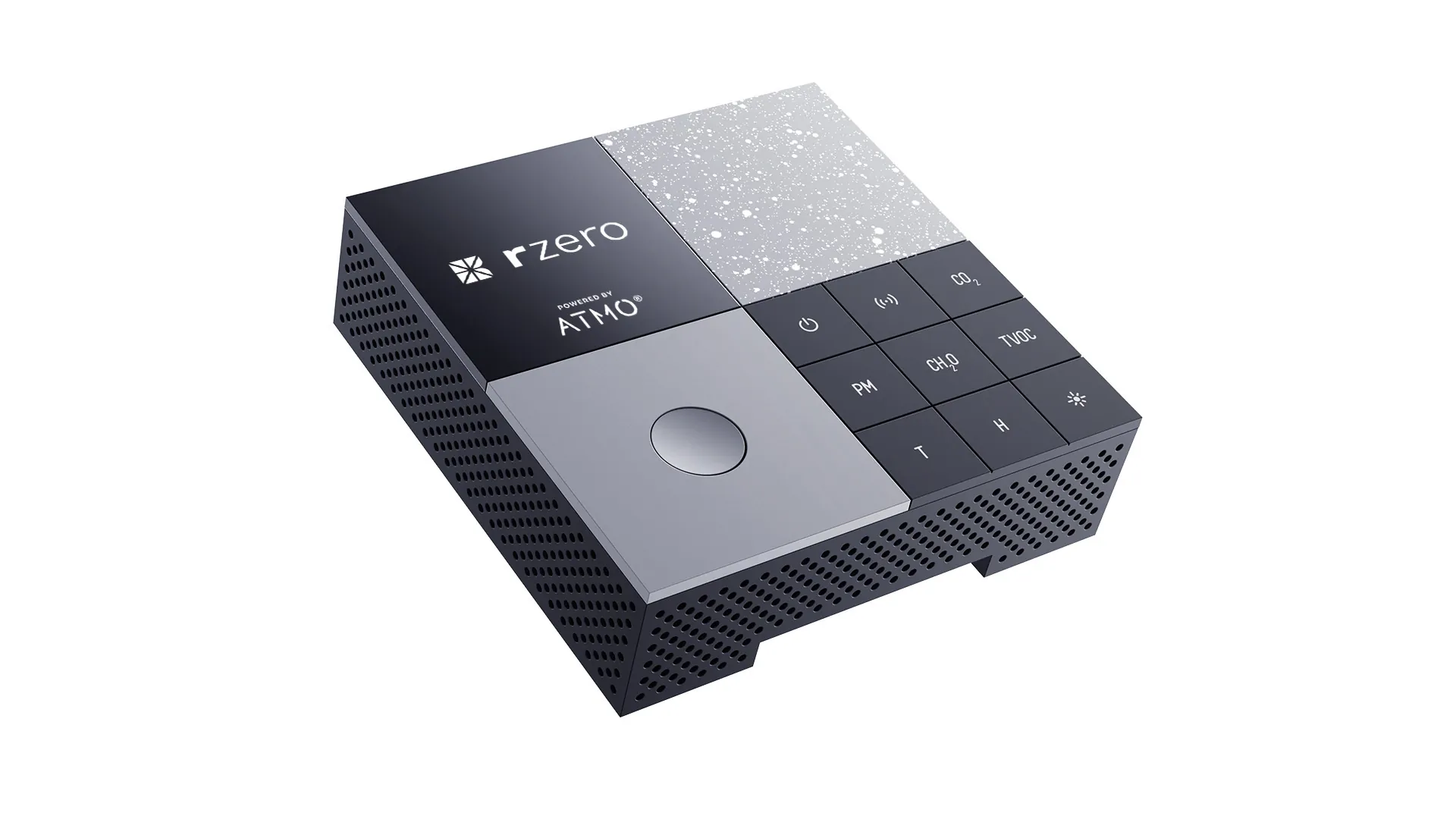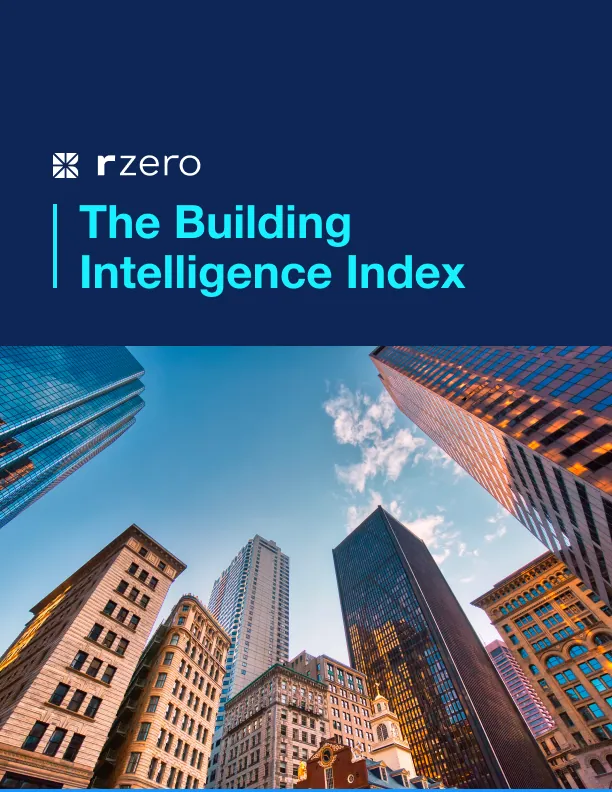
What is Germicidal Ultraviolet-C (UVC) Light?
If you’ve been looking into safe and sustainable disinfection methods for your building, you’ve probably heard about germicidal ultraviolet-C light. But what is germicidal ultraviolet-C light, and what can it do to reduce microbial loads?
To answer that question, we’re going to have to start by looking at the electromagnetic spectrum.
A Quick Look at the Electromagnetic Spectrum

Most types of light on the electromagnetic spectrum appear naturally on Earth, like visible light or radio waves. This natural exposure to visible and infrared light has forced harmful microorganisms to develop immunity to those light wavelengths. Visible and infrared light have long wavelengths with low frequency, which means that any type of long-wavelength light will have little to no effect on bacteria or viruses.
On the other end of the electromagnetic spectrum is ultraviolet light. With shorter wavelengths that travel with more frequency, UV light can be broken down into several types, with UV-C being the third and strongest type of UV light.
UV-C Light and Microorganisms
Usually, UV-C light stays in space. Our ozone layer protects us from the sun’s UV-C radiation, so UV-C light doesn’t appear naturally on Earth. This means microorganisms like viruses and bacteria aren’t resistant to that light.
When those microorganisms are exposed to UV-C light, it disrupts the protein structures that help them grow and reproduce. Without those structures, the microorganisms are destroyed or inactivated. Influenza, E. coli, and SARS-CoV-2 are just a few examples of the types of microorganisms that UV-C light can reduce by 99.9% or more.
Even within the umbrella term of ‘UV-C’ light, there are different types. UV-C light covers all light with a wavelength of 100-280 nanometers, and different wavelengths have different effects. For instance, 254nm UV-C is not safe for human exposure because it can penetrate the outer layers of the skin or eyes and cause irritation. Conversely, 222nm is safe for human exposure because the 222nm wavelength cannot penetrate the outer layers of the skin or eyes. Both types of UV-C light are effective in penetrating microorganisms’ structures and disrupting them.
Simply put, germicidal UV-C light kills germs.
R-Zero Uses UV-C Disinfection
R-Zero’s disinfection solutions use UV-C light to inactivate 99.9% of target microorganisms in the air and on surfaces. UV-C room disinfection can work anywhere, including schools, workplaces, and other facilities.
Indoor air quality matters, especially in crowded or high-traffic spaces. UV-C light doesn’t leave a residue or smell like other cleaning methods might, and it can operate automatically, allowing life to continue as normal in your building.
Get Germicidal UV-C Light Protection for Your Space
R-Zero’s suite of UV-C products provides safe and effective UV-C disinfection that can make any building better.
Are you ready to learn more? Contact us today to find out what your organization needs.
Curious about how each of R-Zero’s products uses UV-C light? Check out our report on how R-Zero technology uses different wavelengths of UV-C light to disinfect the air and surfaces in any space.
More posts you might like
-

Understanding LL97 and Its Impact on NYC Commercial Real Estate
New York City’s Local Law 97 (LL97) represents one of the most ambitious steps toward achieving the city’s sustainability goals. Enacted as part of the Climate Mobilization Act, LL97 imposes strict carbon emission caps on buildings over 25,000 square feet. This law targets the biggest source of city emissions—buildings, which make up about half of […]
-

What is the Right CO2 Level in Commercial Buildings for Productivity and Comfort
In the modern workplace, creating environments that boost productivity and enhance occupant comfort is crucial. One often overlooked factor in achieving this is the management of indoor carbon dioxide (CO2) levels. CO2 serves as a key indicator of ventilation quality in buildings, which directly impacts occupant performance and overall indoor comfort. Why CO2 Levels Matter […]
-

Improve Building Performance & Comfort with Indoor Air Quality Monitoring
Did you hear the news? R-Zero launched a RESET-certified indoor air quality (IAQ) monitor and connected dashboard to visualize and act on indoor air and environmental quality data on demand. Designed for use in office buildings, schools, and healthcare facilities, our comprehensive IAQ and IEQ monitor boosts occupant comfort and operational performance, including HVAC fault […]

